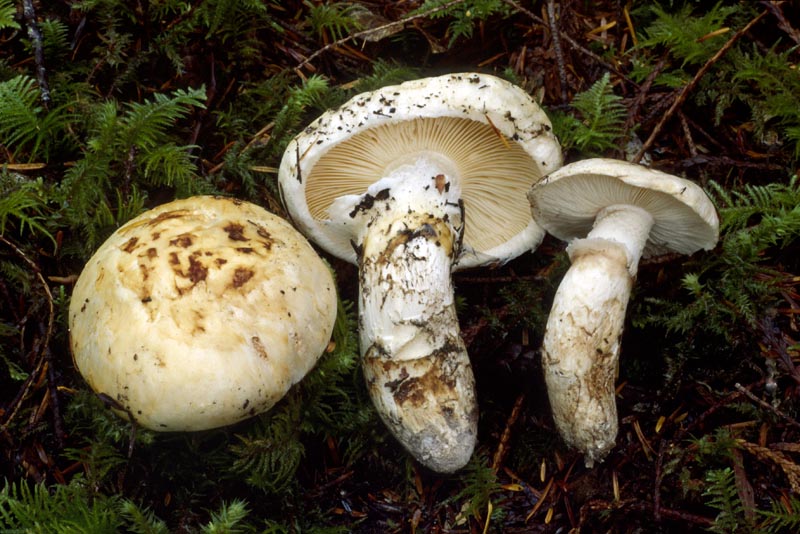Distribution: . It occurs throughout much of North America, but is most abundant on the West Coast, usually appearing scattered to gregarious under conifers on nutrient-poor soils such as dune sands.
Origin: Native
Conservation Status: Not of concern
Edibility: It is edible and choice according to many, but considered mediocre by others.
It is edible and choice according to many, but considered mediocre by others.
Tricholoma magnivelare is one of the more widely sought-after fungi in the PNW, both as a recreational and commercial commodity. Formerly known as Armillaria ponderosa Peck, it is recognized by the stocky stature, overall white color, often with brown fibrils or scales on cap and lower stipe, thick stipe that usually tapers to a pointed base and bears a large cottony ring, and firm flesh with a characteristic spicy odor. The very similar T. matsutake (S. Ito & S. Imai) Singer is enormously popular in Japan and large quantities of American matsutake collected in the PNW are imported to satisfy the demand, creating an important conservation and sociological issue. The volatile spicy odor (famously described by David Arora as a cross between cinnamon candy and dirty socks) demands that the mushroom be used in simple dishes and not over-cooked. Matsutake is most likely to be confused with T. caligatum, or Catathelasma imperiale and C. ventricosum, both of which are pale-colored, and have white spores, prominent rings, and pointed stipe bases. However, both of the latter species lack the matsutake’s spicy odor and have an overall coloration with more gray than brown tones. Amanita smithiana is a dangerously poisonous species that also is white with an often slender rooting stipe base. It too lacks the spicy odor, usually is more slender in stature, and has softer flesh than matsutake. Many other large whitish mushrooms have been mistaken for matsutake, including Russula brevipes and Tricholoma apium Jul. Schäffer. The mycelium of T. magnivelare apparently is parasitized by Allotropa virgata (candystick), a red and white plant that lacks chlorophyll and cannot make its own food as most plants do.
PNW Herbaria: Specimen records of Tricholoma magnivelare in the Consortium of Pacific Northwest Herbaria database.
CalPhotos: Tricholoma magnivelare photos.




